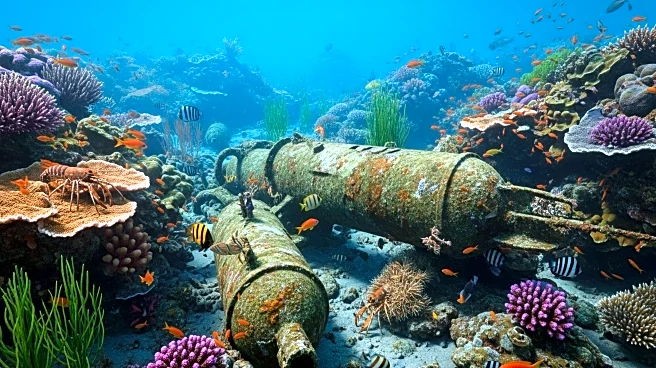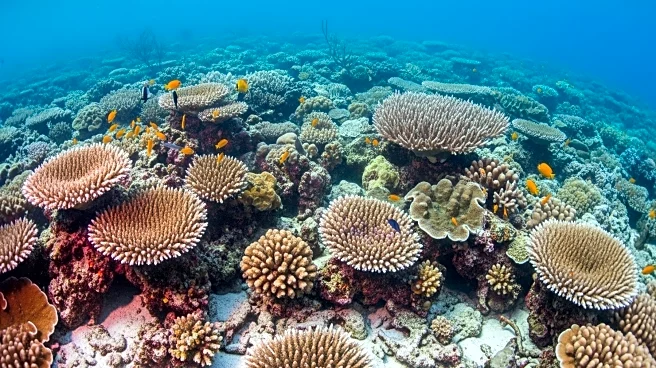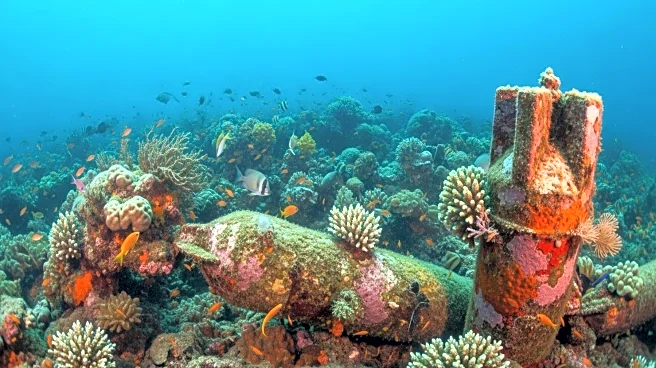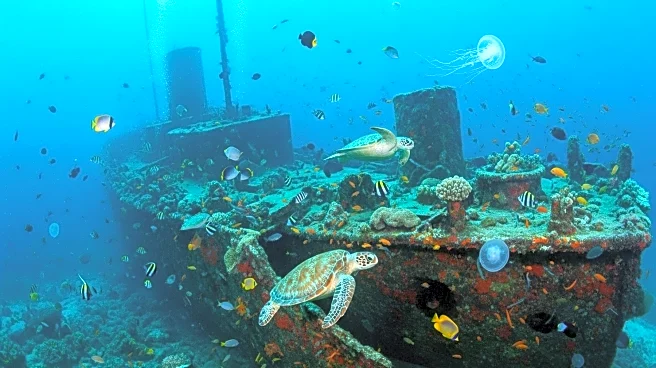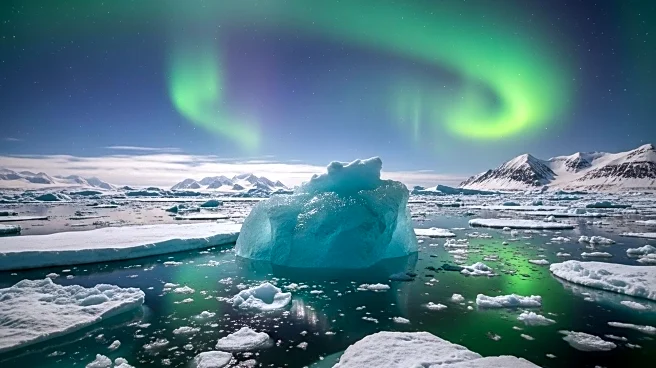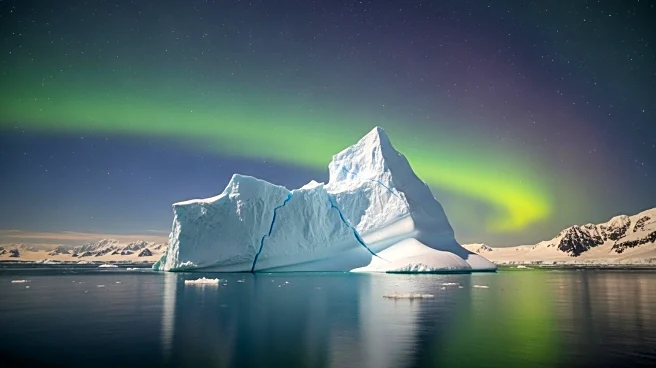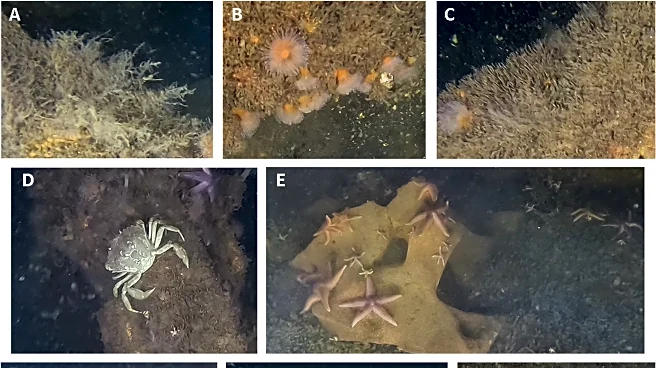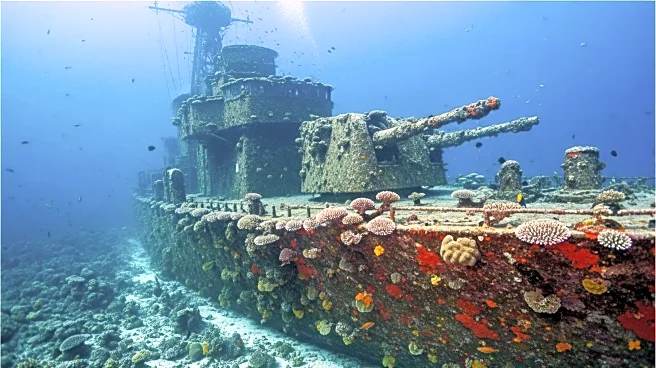What is the story about?
What's Happening?
Scientists have discovered marine life thriving on World War II explosives in the Baltic Sea, challenging assumptions about the toxic nature of these remnants. The study, published in the Journal of Communications Earth and Environment, found that sea creatures such as crabs, worms, and fish are flourishing on the surfaces of abandoned warheads. Researchers observed that these creatures outnumber those in surrounding seabeds, suggesting that the hard surfaces of the explosives provide a unique habitat. The area is isolated from human activity due to chemical contamination, creating a protective environment for marine life despite potential toxic trade-offs.
Why It's Important?
This discovery has significant implications for marine ecology and conservation efforts. It demonstrates the resilience of marine life and its ability to adapt to polluted environments, offering insights into how ecosystems can recover from human-induced damage. The findings may influence policies on handling underwater munitions and highlight the need for further research into the ecological impacts of historical warfare. Additionally, the study could inform strategies for artificial reef creation, using similar structures to support marine biodiversity.
What's Next?
Researchers are now focused on assessing the level of contamination absorbed by the marine life and their reproductive capabilities. This will help determine the long-term viability of these ecosystems and guide conservation strategies. The study may also prompt international discussions on the management of underwater munitions sites, balancing ecological benefits with potential risks. Further exploration of similar sites could uncover more instances of marine life adaptation, contributing to a broader understanding of ecological resilience.
Beyond the Headlines
The study raises ethical questions about the legacy of warfare and its environmental impact. It challenges the perception of war remnants as purely destructive, suggesting they can inadvertently support life. This could lead to a reevaluation of historical sites, considering their potential ecological value. The research also highlights the interconnectedness of human activities and natural ecosystems, emphasizing the need for responsible environmental stewardship.
AI Generated Content
Do you find this article useful?
